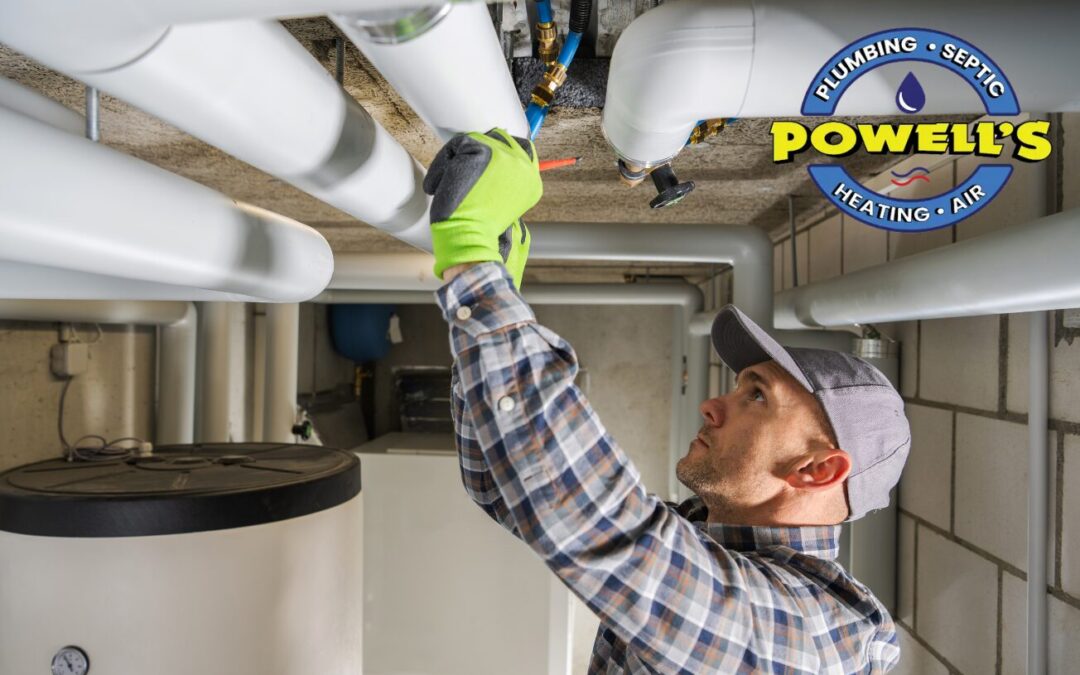When homeowners discover a plumbing leak, they usually worry about water damage, mold, or rising utility bills. But there’s another, often overlooked consequence of plumbing problems: damage to your HVAC system.
Your home’s plumbing and HVAC systems may seem unrelated, but they actually share space, air, and even equipment in some cases. And if a leak goes unnoticed or unresolved, it can quietly interfere with your heating and cooling performance—leading to reduced efficiency, higher energy bills, and even system failure.
Let’s explore how plumbing leaks can hurt your HVAC system, what signs to watch for, and how to prevent costly damage to both systems.
1. Leaks Near or Around HVAC Equipment
Many plumbing lines run through basements, attics, or utility closets—the same spaces that house HVAC units like furnaces, air handlers, and heat pumps. If a pipe leaks in those areas, it can:
- Rust out furnace components
- Short-circuit wiring or control boards
- Warp ductwork or insulation
- Create puddles that lead to mold around HVAC intakes
Water and electricity don’t mix. If HVAC equipment is exposed to moisture over time, it can lead to permanent damage and costly replacements.
Tip: Always investigate the source of water around HVAC equipment—it may not be the unit itself.
2. Leaking Pipes and Poor Indoor Air Quality
Plumbing leaks—especially slow, hidden ones—can lead to excess humidity in your home. This extra moisture can cause:
- Mold and mildew buildup inside HVAC ductwork
- Clogged air filters from airborne spores and contaminants
- Musty odors circulating through your vents
- Health issues from poor indoor air quality
If your HVAC system is constantly fighting high humidity caused by a plumbing leak, it works harder and wears out faster.
3. Pipe Leaks Affecting HVAC Drainage
Some HVAC systems—especially air conditioners and high-efficiency furnaces—have condensate drain lines that remove excess moisture. If nearby plumbing leaks saturate the area or clog floor drains, it can cause HVAC systems to:
- Overflow their condensate pans
- Shut down due to water alarms
- Back up into ductwork or mechanical components
This creates a cycle of water damage that starts with plumbing but ends in HVAC breakdown.
4. Plumbing Leaks That Cause Freezing or Temperature Fluctuations
In colder climates, a plumbing leak can cause:
- Wet insulation around HVAC ducting, reducing efficiency
- Frozen pipes that burst and leak near furnaces or vents
- Chilly spots in the home where HVAC output is disrupted by water-damaged areas
A dripping pipe in the attic can change the thermal balance of your HVAC zones—and your comfort.
Signs Your HVAC System Might Be Affected by a Plumbing Leak
- Unexpected humidity indoors or foggy windows
- Moldy smells coming from your vents
- AC or furnace short cycling
- Pools of water near ductwork, vents, or air handlers
- Rust or corrosion on nearby equipment
If your HVAC system isn’t working like it used to and you’ve ruled out electrical or refrigerant issues, check nearby plumbing.
How to Protect Both Systems
- Fix plumbing leaks immediately.
Even slow drips can damage HVAC components over time. - Keep utility areas dry.
Use drip pans or floor sensors near plumbing in shared spaces. - Schedule dual inspections.
Have both a plumber and HVAC tech assess utility rooms once a year. - Insulate pipes and equipment.
Prevent freezing, sweating, or temperature-related moisture buildup. - Watch for signs of mold.
Especially around vents or near HVAC equipment. If you smell must, investigate both plumbing and HVAC systems.
A small plumbing leak might seem like a minor inconvenience—but when it affects your HVAC system, the damage can multiply fast. By staying proactive and recognizing how these two systems are connected, you’ll protect your home’s comfort, efficiency, and long-term value.
When plumbing leaks go unchecked, your HVAC system pays the price. Catch the connection early—and keep both systems running smoothly.





Recent Comments